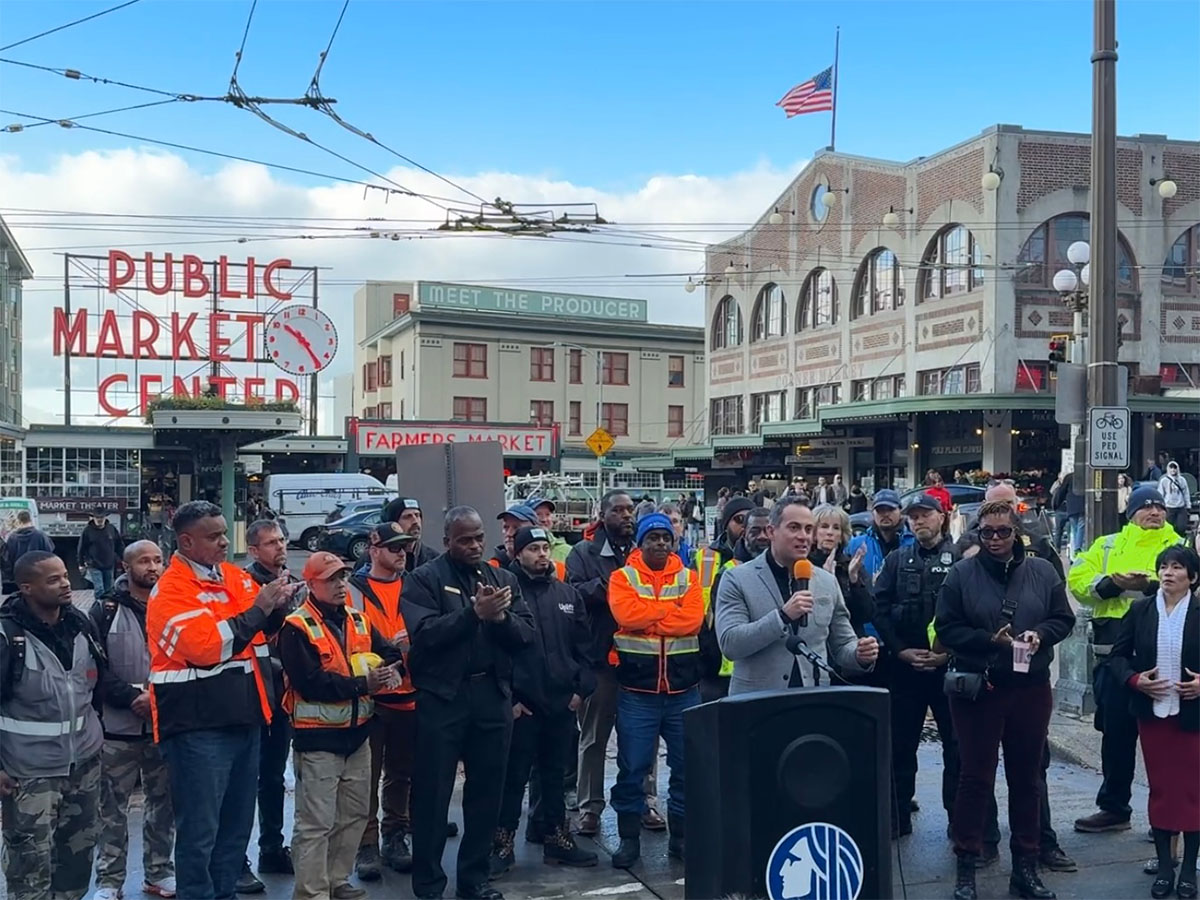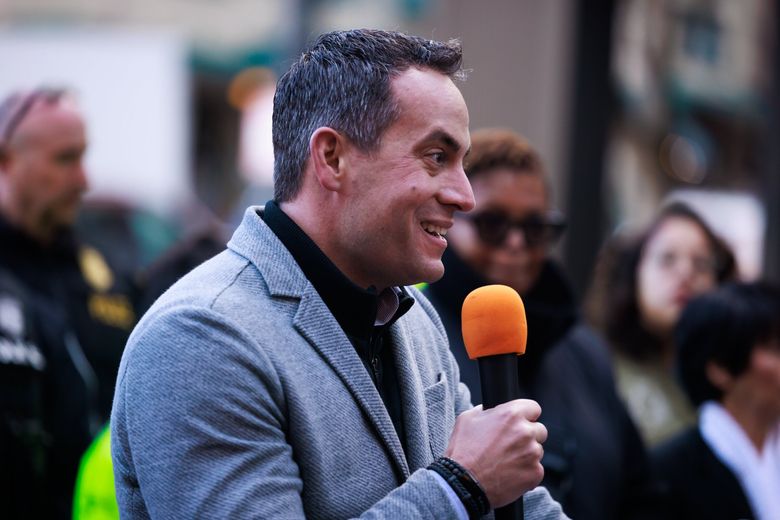Seattle Mayor Bruce Harrell issued an executive order Friday that is meant to provide a holistic approach to addressing root causes of street disorder and open-air drug use in downtown and the Chinatown International District while also beautifying public spaces with art installations, lighting and regular cleanings.
The order establishes the Downtown Activation Team, comprised of members from more than a dozen city departments, social service providers and community partners like the Downtown Seattle Association.
The team, which includes police, firefighters and transportation and utility workers, is responsible for carrying out a coordinated response to criminal activity, street and sidewalk cleaning, garbage pickup, graffiti abatement and other environmental changes. Restoration work on Third Avenue and in the Pike-Pine corridor began in early September and in Little Saigon at the start of the month.
Making arrests and working to prevent fentanyl overdoses will inevitably be part of what Harrell called a “place-based approach” to prioritize public places where there is significant crime, address safety and health concerns and enhance quality of life.
With tires rolling over cobblestones providing a background soundtrack, Harrell also introduced draft legislation for two ordinances at a news conference on Pike Street, near First Avenue. The legislation is aimed at protecting city employees and contractors as they work and clamping down on illegal street vendors.
If passed by the Seattle City Council, intentionally interfering with government services — that is, obstructing transit workers, street cleaners or social service providers conducting outreach to people experiencing homelessness or dealing with substance use disorders — would be a misdemeanor offense, as would vending without a permit.
“We actually should have the right to clean our streets. … You should not be in harm’s way when you are doing this work,” Harrell said of the first proposed ordinance.
He said while the city is proud of its legal street vendors and wants them to thrive, “We also have no tolerance for unlawful, illegal street vending and for the people that are skirting the rules and even participating in the illegal trafficking of goods.”
The Downtown Activation Team, modeled on the city’s Unified Care Team that provides services to the city’s unhoused population, is meant to provide a coordinated, compassionate approach and will implement “scheduled restoration actions” twice a day in areas of concern, according to Harrell and the executive order.
Data will be collected on the scheduled restoration actions, which “are intended to clean areas, enhance public safety and improve areas with public art and creative expression whenever possible,” the order says. An online dashboard will be created to share the team’s data with the public.
More than 50 murals and works of art have already been installed in the downtown activation area, Harrell said.
He said that while the Downtown Activation Team was unveiled Friday as a pilot program, it was framed that way so its restoration mission can be tweaked as the work unfolds. The intent is to make it permanent and expand to other neighborhoods as needed, he said.
For several minutes, a woman in the crowd disrupted the news conference, screaming at Harrell to “Stop the sweeps!” — an apparent reference to the clearing of homeless encampments — and accusing him of murdering his constituents.
“I place no judgment on what she’s arguing for — she’s asking us not to kill people and not to hurt people,” Harrell said of the woman who heckled him. “What she doesn’t realize is that she’s actually being heard. She doesn’t realize she’s guiding what we do.
“Your words resonate with what we’re trying to do. Our framework is designed to lead with compassion but also to be, quite frankly, tough on the bad people that are harming our streets.”
Scholes invoked the city’s recent history of attempting, then pulling back on, a plan to cut the Seattle Police Department by half as the reason the department is contending with a staffing crisis that’s translated into longer response times to 911 calls. He also touched on public policies from a couple of years ago that he says allowed tents to flourish in city parks.
Scholes said Harrell’s restoration plan is already working downtown, with violent crime and open-air drug use noticeably declining.
By working to “distinguish between those who are hurting and need help, from those that are out hurting other people and need to be held accountable,” Scholes said, “we’ve seen far fewer people suffering on our streets.”


